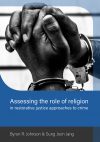In an investigation of over seven million pupils, researchers found that Black pupils have the highest rate of autism in the UK – they further noticed that there is “little research” on the existence of autism in ethnic minorities
In the first study of its kind, the Autism Research Centre (ARC) at Cambridge University focused on analysing the existence of autism across over seven million pupils in England.
Autism is more common than researchers initially thought.
They found that one in 57 children are on the autistic spectrum, which is 1.76% of the country. Researchers believe this increase is due to better awareness and diagnosis.
Dr Andres Roman-Urrestarazu, lead researcher from the Autism Research Centre (ARC) at the University of Cambridge, said: “We can now see that autism is much more common than previously thought. We also found significant variations in autism diagnosis in different ethnic minorities, though the reason why this should be the case isn’t clear and warrants further research.”
This new data found that Chinese pupils are 38% more likely to have autism than white pupils, with Black pupils 26% more likely.
The team found that existing cases were “strikingly high” for Black children specifically.
A fragmented understanding of autism and race?
When it comes to the intersection of race and autism, the team noted that there was “little research” on the existence of autism in ethnic minorities. However, the reality of prevalence in these communities is high.
This can create a distinct knowledge gap – leading to children growing up without a diagnosis, further at risk of meltdowns and being met with disciplinary action. When it comes to autism, the stereotypical image is of a brilliant, young, white man. He is almost always offputtingly intelligent, and unable to understand why others do not share in a highly specific, mathematical obsession.
A US primary care clinician said: “The primary candidate for an autism diagnosis and services is a seven-year-old White boy. Even a seven-year-old White girl won’t get the same level of diagnosis or intervention.”
This depiction may be true for some people. For the overwhelming majority, this kind of race and gender based expectation influences how educational authorities and health professionals treat them. For ethnic minority pupils with autism, problems at school are not often translated into a diagnosis.
When Suzy Rowland’s son was diagnosed with autism, she wrote about this gap between expectation and reality for Black parents. She explained that she had to fight to get her son’s autism and ADHD diagnosed, while punitive measures were given by schools as a response to his behavioural problems.
She said: “It points to a failure of medical best practice to observe that children of Black Caribbean origin in the UK and African American children in the US are routinely diagnosed with autism at an older age or misdiagnosed with depression or social, emotional and behaviour issues, which have different treatment protocols.”
Why are Black pupils so likely to have autism?
Out of seven million pupils, the team found that 119,821 had a diagnosis of autism. Boys are still significantly more likely than girls to be diagnosed, which the team believe highlights flaws in gender-based diagnosis.
The data further revealed that prevalence was highest in pupils of Black ethnicity at 2.1%, while at the other end of the spectrum they were lowest in the Roma community at 0.85%. This work connects socioeconomic background to autism.
So pupils are 60% more likely to be socially disadvantaged, if they also have a record of autism.
Researchers wrote that they: “found that ethnic differences in autism were mediated through socio-economic disadvantage.”
The researchers highlight this relationship as a vicious circle.
Because when it comes to socio-economic disadvantage, children from these families are at higher risk of autism – but having a child with autism can also increase the risk of poverty.
The team suggest that health authorities examine the link between public policy, autism, and immigrant or ethnic minority populations – to better understand why some autism diagnoses come to Black pupils so late, and what help they get after this point.
This study does not account for pupils who remain undiagnosed.
Professor Simon Baron-Cohen, Director of the ARC, said: “We can now see a snapshot of how many autistic children there are, and can drill down into local and ethnic variation, and reveal links with vulnerability. It is important that we safeguard the rights of children to access diagnostic services and education, tailored to their needs.”
The full study is available here.
Contributor Profile
Editor's Recommended Articles
-
Must Read >> Where is the research into Black autism and ADHD?































